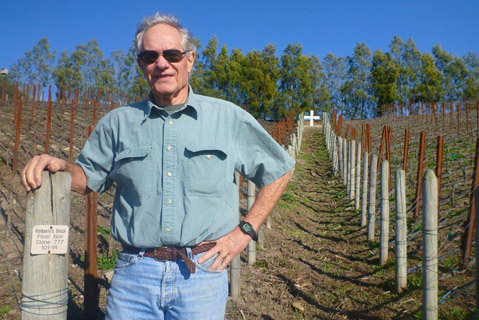Santa Barbara vs. Palm Springs
Two "Utopias of a Sort"

GOLF IS KING: Author Kevin Starr, in his marathon series of books trying to make sense of California, compared Palm Springs — golf, fancy cars, and has-been movie stars — with Santa Barbara. How much value there is in comparing two utterly different cities, as Starr does in Coast of Dreams, I’m not sure.
Palm Springs-Rancho Mirage has Bob Hope Drive. We have Hope Ranch. The Springs has homes with straight lines of steel-and-glass modernism. We have Spanish Revival.

There in the desert they bask in delightful 115-degree summers. We have to suffer at 75. We’re pretty much Democratic. In Springs, Republicanism is a religion. Golf-tournament celebs are billboard gods. In Santa Barbara, filmmakers are busy making movies, not holes in one.
In Coast of Dreams, where Starr took a 1990-2003–era look ahead to figure out whether California was going down the drain, Palm Springs appeared to be one endless celebrity golf tournament and country-club dress-up party led by retired show-biz royalty. Armies of plastic surgeons, but no university.
The jury is still out on whether the Golden State is headed downhill. The Springs doesn’t seem to have changed much except to become more so. In the 1980s alone, Starr noted, 33 country clubs were established there, and by the 1990s, there were 73 golf courses. “Without golf, what would Palm Springs do?” Starr wondered.
Starr devoted only 20 of the book’s 765 pages to the two towns, finding that both offer “the stylized pleasures of an urban resort … utopias of a sort.” He found them unique, rich enclaves far from the madding crowd of L.A. and the boring hinterland of Bakersfield, etc.
Starr defined Palm Springs with one word: golf. For Santa Barbara he came up with — get this — spirituality. (Starr obviously never ventured onto lower State Street on a Saturday night.)
Santa Barbara is basically Anglo — it just elected its first Latina to the City Council — but blood of its early Spanish settlers runs through the veins of many. For instance, my granddaughter, Dani Arellanes, is a sixth-generation Santa Barbaran. As Starr points out, Superior Court Judge Frank Ochoa is a direct descendant of Presidio comandante José Francisco de Ortega. TV news anchor Paula Lopez, the judge’s wife, is a ninth-generation Santa Barbaran and direct descendant of Pablo Cota, a Spanish army lieutenant stationed at the Presidio.
Each town, Starr found, was “a job-creating machine: every kind of job, up and down the labor market … even in bad times you could go to these places and make a living.” At least, before the current recession.
“For all its many charities and good causes, Palm Springs was about golf, nightlife, swimming pools with a Frank Sinatra soundtrack in constant play. Santa Barbara was about gardens and roses, Mediterranean villas perched on Riviera hills and some golf, but a lot more talk about spiritual values.” (Except, of course, during City Council elections.)
Who, Starr asked, could deny that they were “two of the most intriguing urban cultures of California in the 1990s?”
As a fourth-generation Californian, Starr wondered whether “California was an aberration, a sideshow, or worse, a case study in how things could go wrong in the United States.” Since the publication of Dreams, an excellent look at the state as it was then, Starr still worries publicly whether California is off the rails, and whether its dream is dead. But he’s not ready to write its obit.
KIMBERLY REMEMBERED: If you see Kimberly wine on a restaurant menu, think about ordering it — and think about a young woman who died so tragically.
On November 2, 1995, Kimberly Ernest, 26, was brutally attacked, raped, and murdered in Philadelphia, while jogging before work. Her death was a stunning blow to her cousin, Greg Brewer, who is co-owner of Brewer-Clifton Winery and winemaker at Melville Vineyards and Winery, on Highway 246 between Buellton and Lompoc.
In the late 1990s, Brewer and the Melville family planted a two-acre block in the Melville vineyard, covering two hills sloping together in the shape of a butterfly. A white cross was placed on top in Kimberly’s memory.
Kimberly pinot noir wine is sold only in restaurants. Brewer donates all proceeds to the North County Rape Crisis and Child Protection Center. My wife, Sue, and I toured the site last weekend with owner Ron Melville and will be looking for Kimberly’s wine on menus.



